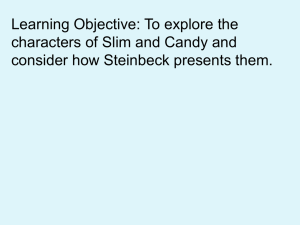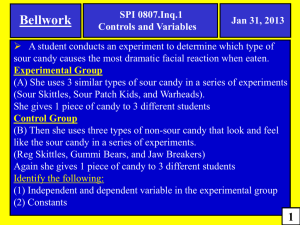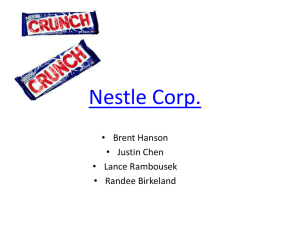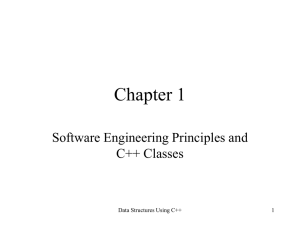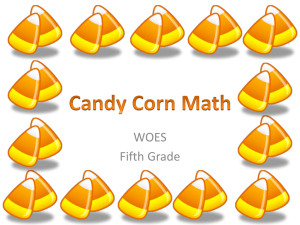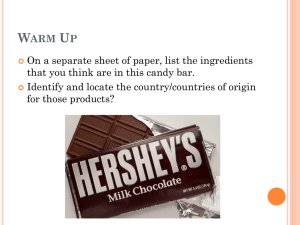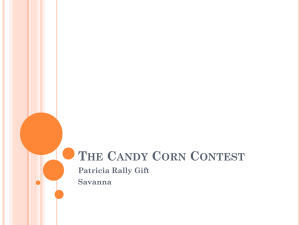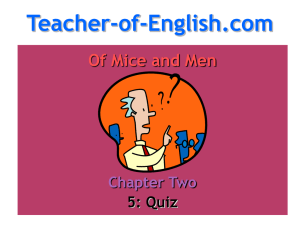ACS PowerPoint Template - American Chemical Society
advertisement
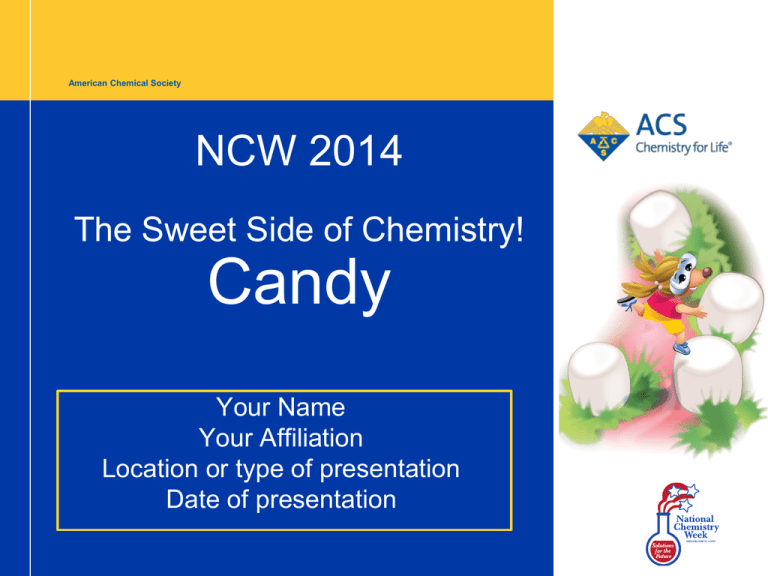
American Chemical Society NCW 2014 The Sweet Side of Chemistry! Candy Your Name Your Affiliation Location or type of presentation Date of presentation What is candy? and What does it have to do with chemistry? Candy: a confection made with sugar (or other sweeteners) and often flavorings and fillings. sucrose American Chemical Society Chemistry: The study of the properties of matter and the changes that can occur in matter. 3 The Physical Properties of Candy Making Molecular Structure American Chemical Society Melting point Flavor characteristics 4 Types of Molecular Structure in Candy Crystalline Solid: example-chocolate (crystalline cocoa butter) Amorphous Solid: example-hard candy (sucrose solution) Soft Polymeric Solid: example-Gummy Bears or Jello (gelatin gel) American Chemical Society 5 What’s the difference between eating hard candy and eating glass? vs. American Chemical Society 6 The Importance of Temperature Name Temperature Description Candy Type Thread 223-235 °F Syrup drips from a spoon Candied fruit Soft Ball 235-245 °F Ball in cold water, flattens when removed fudge Firm Ball 245-250 °F Stable ball, loses shape when pressed Light caramel candy Hard Ball 250-266 °F Holds balls shape, sticky marshmallows Soft Crack 270-290 °F Firm, flexible threads Taffy Hard Crack 300-310 °F Cracks under pressure Lollipops Caramel 320-350 °F Golden colored sugar syrup pralines American Chemical Society 7 The Chemical Properties of Candy • Flammability • Caramelization • Color change • Gas production American Chemical Society 8 Sugar Free Candy Sugar Alcohols, such as isomalt High-intensity Sweeteners such as sucralose. American Chemical Society 9 History Ancient candy was based on Honey Sugar cane agriculture started in India in 6th century BCE Candy only became widely available after the Industrial Revolution (1830s) American Chemical Society 10 Culture $2,500 $2,000 in millions $1,500 $1,000 $500 $0 Valentine's Day American Chemical Society Easter Halloween Christmas Source: U.S. Department of commerce 11 Economics Per Capita Retail Candy Sales American Chemical Society Source: US Department of Commerce 311D Confectionery Report 12 Health and Fitness Positive Effects • Peppermint and mint candies can soothe upset stomachs • Dark chocolate can help reduce risk of heart disease • Mint-flavored gum can increase short-term memory • One study suggested candy consumers lived longer than non-consumers Negative Effects • Cavities • Obesity • Choking • Diabetes American Chemical Society 13 References: Celebrating Chemistry, NCW 2014 edition: "The Sweet Side of Chemistry—Candy”, American Chemical Society, Washington D.C. National Confectioners Association, http://www.candyusa.com/, Washington, DC 20007 The Science of Cooking, Candy, Exploratorium, Pier 15, San Francisco CA 94111, https://www.exploratorium.edu/cooking/candy/sugar.html McGee, Harold, On Food and Cooking, Simon and Schuster, 2004


